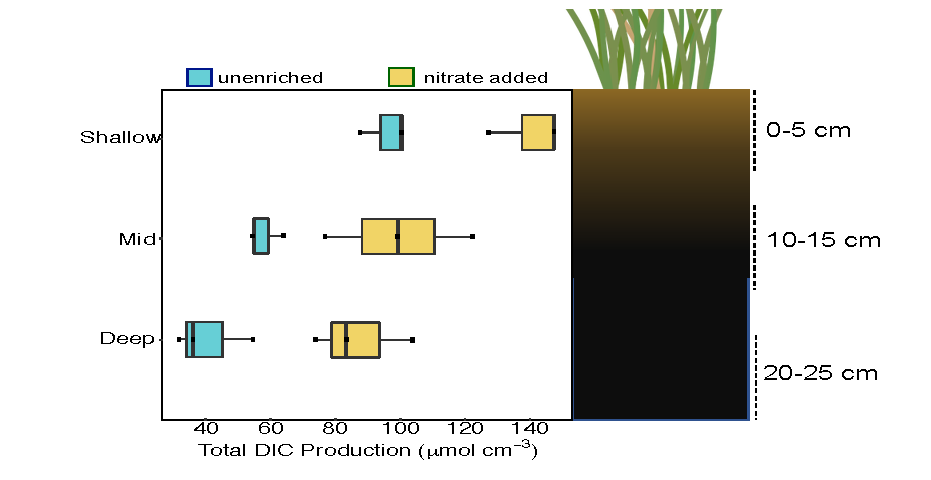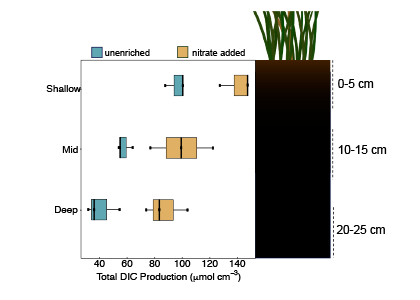With their high primary productivity and slow decomposition in anoxic soils, salt marshes and other coastal wetlands can store carbon more efficiently than terrestrial uplands. These wetlands also provide critical ecosystem services such as interception of land-derived nutrients before they can enter the coastal ocean. Therefore, it is important to understand how anthropogenic supplies of nitrate (NO3–) affect marsh sustainability and carbon storage.
In marsh sediment studies, the most common form of experimental nitrogen enrichment uses pelletized fertilizer composed of ammonium, urea, or other organic based fertilizers. Authors of a recent study published in Global Change Biology hypothesized that when nutrients were instead added in the form of nitrate (NO3–), the most common form of nitrogen enrichment in coastal waters, it would stimulate microbial decomposition of organic matter by serving as an electron acceptor for microbial respiration in anoxic salt marsh sediments. Furthermore, decomposition would vary with sediment depth, with decreased decomposition at greater depths, where less biologically available organic matter accumulated over time.

Figure 1: DIC production as a proxy for microbial respiration in salt marsh sediments from three distinct depth horizons (shallow 0-5cm, mid 10-15cm, deep 20-25cm) that span a range of biological availability. The addition of NO3- (green) stimulated DIC production relative to unenriched sediments, regardless of sediment depth. All samples were run under anoxic conditions (without the presence of oxygen), closely matching that of normal salt marsh sediments.
Surprisingly, NO3– addition stimulated decomposition of organic matter at all depths, with the highest decomposition rates in the surface sediments. This suggests that there is a pool of “NO3–-labile” organic matter in marsh sediments that microbes can decompose under high-NO3– conditions that would otherwise remain stable. As human activities continue to enrich our coastal waters with NO3– through agricultural runoff, septic systems, and other pathways, it could inadvertently decrease coastal wetlands’ carbon storage capacity, with negative consequences for both blue carbon offsets and marsh sustainability in the face of sea level rise.
Authors:
Jennifer Bowen (Northeastern University)
Ashley Bulseco (MBL/WHOI)
Anne Giblin (MBL)




